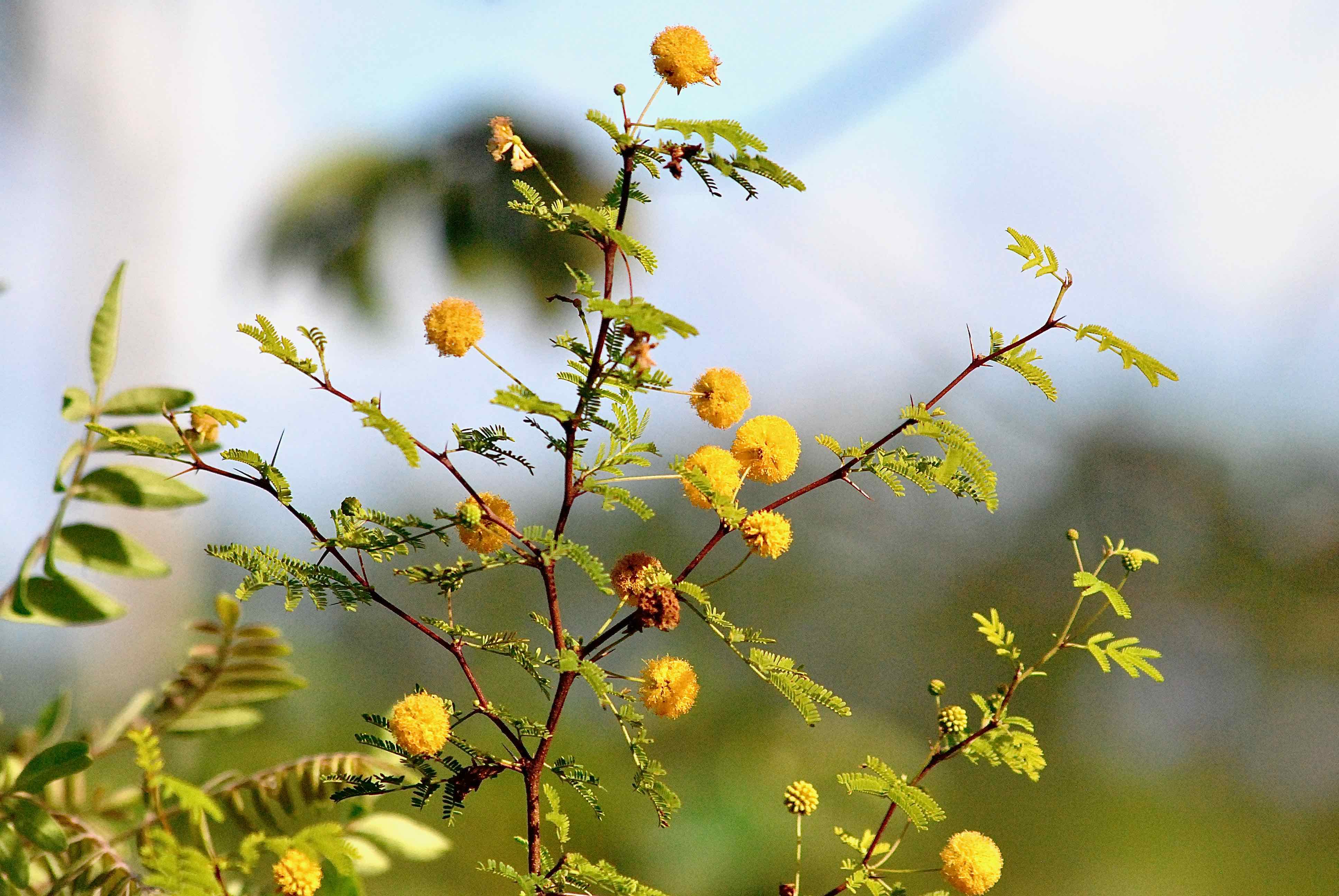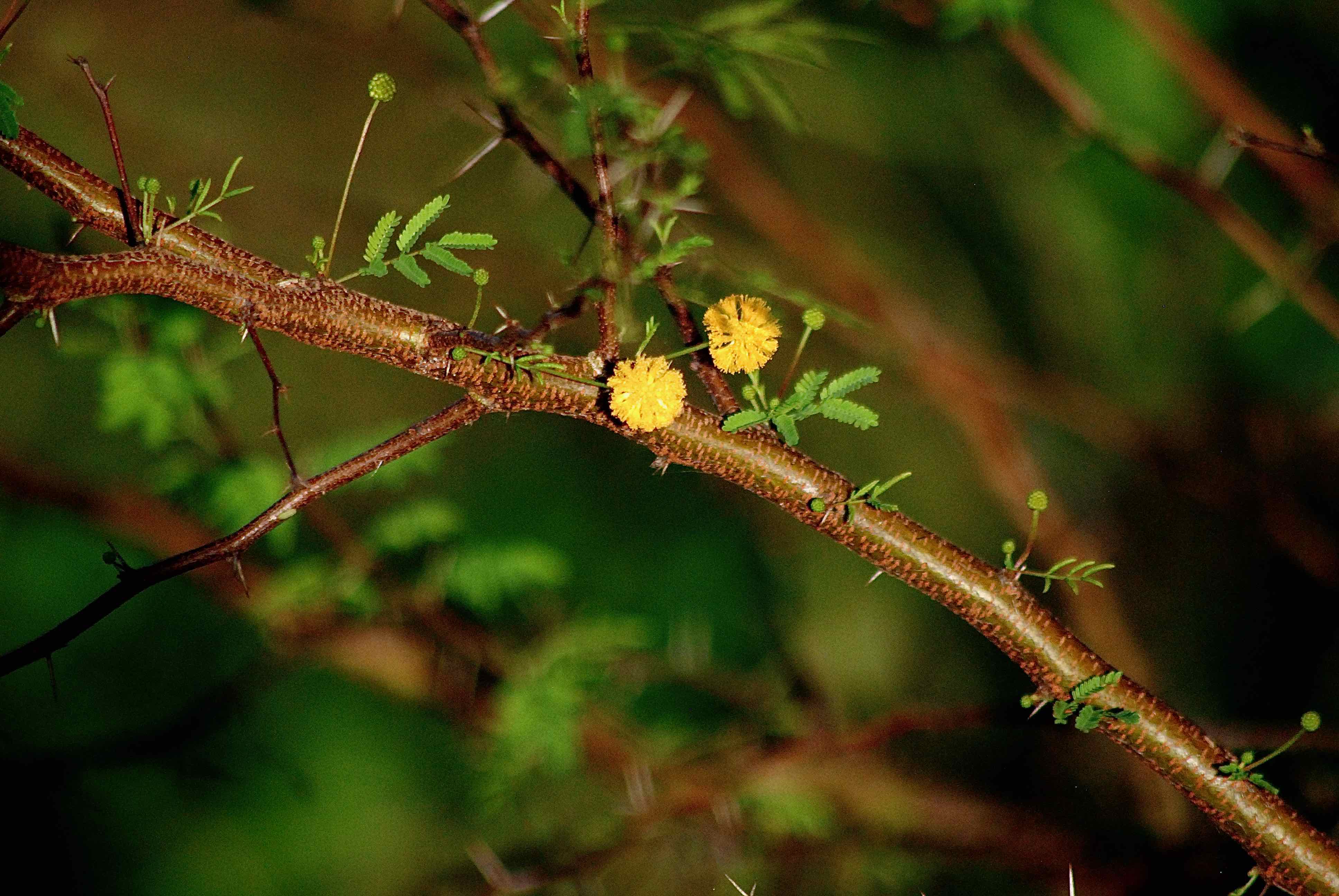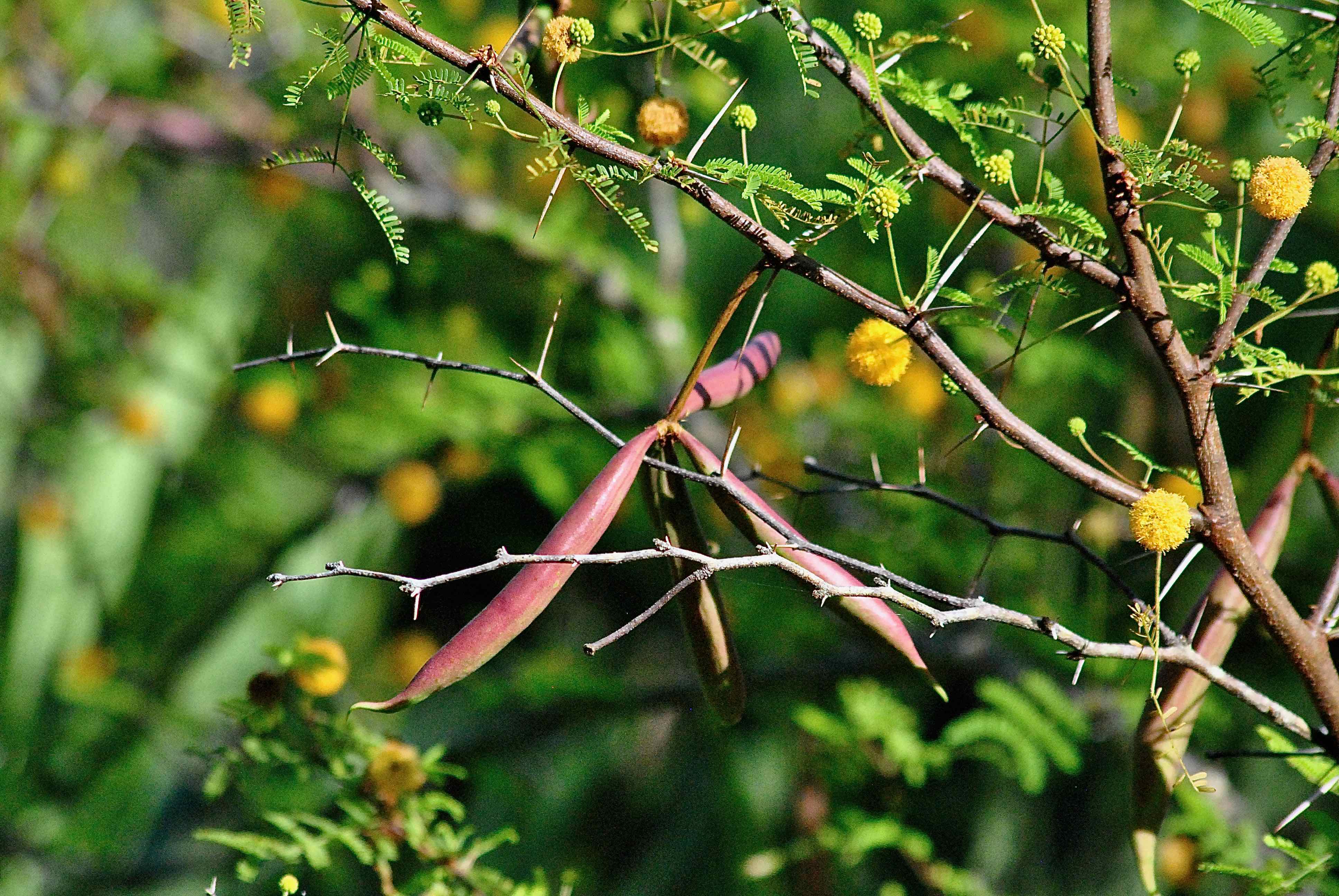
Sweet acacia, photographed at Everglades National Park, Homestead, Miami-Dade County, in April 2015.
When we think of acacia, we envison elephants reaching into grand trees in the savannas of Africa. It wouldn't take much of an elephant to reach into sweet acacia, Vachellia farnesiana var. farnesiana , because it isn't tall at all. In fact, it's more shrub than tree.
It's found in scattered counties throughout Florida, from the Keys to the Panhandle, but it is considered rare in South Florida. It is not found in Palm Beach County.
It is native to the United States, found across the southern tier, from Florida to California and as far north as Georgia. It is one of two acacias native to our region, the other being pineland acacia. The two are so closely related that they are considered variations of the same species. Pineland acacia is known scientifically as Vachellia farnesiana var. pinetorum, but unlike its close cousin, it is only found in Florida.
Sweet acacia is also found throughout the Caribbean, Mexico, Central America and South America as far as Argentina and Chile. It's naturalized in the Old World, including Australia, southern Asia and the Pacific islands.
Sweet acacia tops out at 15 or 20 feet tall; it has compound leaves and long, sharp thorns along the stems, which inspire another common name: needle bush. It puts out small, puffy yellow flowers that are extremely fragrant — so fragrant that they're used to make perfume. The fruit is a curved pod a few inches long. The seeds are food for birds and other wildlife. It's a sun-loving plant and capable of forming massive thickets if it gets a chance. It's considered an invasive in places where it's not native, particularly in the Pacific. It's so much of a problem in Fiji, it's called Ellington's curse, Ellington being a place, not a person, by the way.
How sweet acacia made its way around the globe is a mystery. It's possible nature did it through floating seeds or birds. Seafaring Polynesians might have brought it out of South America, or the Spanish could have exported sweet acacia from the New World to the Philippines, where nature might have taken over. In any case, European explorers found sweet acacia growing in Australia when they first arrived.
It's an incredibly useful plant. Wood provides fuel and small timber, leaves fodder for animals. Pods are used to make black dye, the bark to tan leather. In Mexico, the flowers are used as a headache remedy and for indigestion. The pods are used for dysentery and skin problems. Roots are chewed to counter scorpion stings. In india, the leaves, wood and bark are all used for various problems.
Sweet acacia is a member of Fabaceae, the pea family. Other names: desert sweet acacia, dwarf sweet acacia, huisache, Texas huisache, aroma, kandaroma, klu, klu bush, popinac.



